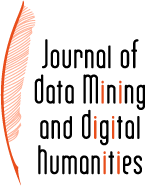 |
Vers une robotique du traduire
L’apparition sur la toile en 2017 de nouveaux services de traduction automatique neuronale reposant sur des algorithmes d’intelligence artificielle comme DeepL et Google Translate correspond à un nouveau bond en avant en matière de traduction automatique. Ces systèmes récents, comme les systèmes de la génération précédente de traduction automatique statistique et de traduction automatique statistique factorisée, fonctionnent à partir de grands corpus alignés et produisent des résultats dont la qualité est pour certains comparable à certaines traductions humaines. Il s’ensuit que pour produire une valeur ajoutée, le traducteur doit apporter un plus par rapport à la machine. Ce plus peut être inhérent à certains domaines où l’emploi de la machine n’a en soi guère d’intérêt du fait de la dimension essentiellement esthétique de la traduction : c’est le cas des traductions littéraires qui, si de nombreux travaux de traductologie universitaire y prennent appui, ne représentent qu’une petite partie de l’activité de traduction professionnelle existante.
Comme de surcroît la machine permet des gains de productivité de l’ordre de 150 à 200% (certains traducteurs atteignent des rendements de 6000 à 8000 mots par jour), la technique de la post-édition tend à s’imposer de plus en plus dans les industries de la langue, ce que confirme en 2017 la sortie de la norme ISO 18587 (Services de traduction — Post-édition d'un texte résultant d'une traduction automatique — Exigences). Cette technique de post-édition pose un cas de conscience au traducteur : accepter de ne pas être à l’origine de sa propre traduction au profit de la machine.
L’intelligence artificielle est en train de changer le monde et le rapport que les humains entretiennent avec le travail et concerne les traducteurs au premier chef. La traduction humaine ou biotraduction est-elle en voie d’extinction ? Cette publication dresse un état des lieux provisoire de la question du rôle de l’humain dans l’activité traduisante. En effet, le développement fulgurant de l’intelligence artificielle oblige non seulement les traducteurs professionnels à s’adapter, mais aussi les formations en traduction ainsi que la recherche afférente. Les approches mises en dialogue dans le cadre de cette publication convoquent donc autant l’informatique que la linguistique, la traductologie, la traduction et la didactique des langues.
Le volume est composé des articles listés ci-dessous. Les liens vers les versions finales seront affichés au fur et à mesure de leur disponibilité.
Volume édité par Anne Baillot (Le Mans Université, France), Ellen Carter, Thierry Grass et Pablo Ruiz Fabo (Université de Strasbourg, France). Les articles proposés ont fait l'objet d'une évaluation par des membres du conseil scientifique du colloque Robotrad 2021 ou par des relecteur·trice·s externes ; qu'iels en soient remercié·e·s.
Introduction
a. Vers une robotique du traduire – Introduction. Anne Baillot ; Ellen Carter ; Thierry Grass ; Pablo Ruiz Fabo.
b. Towards robotic translation? – Introduction. Anne Baillot ; Ellen Carter ; Thierry Grass ; Pablo Ruiz Fabo.
I. Approches historiques et linguistiques
1. Le mépris (envers la traduction automatique) est-il une attitude traductologique ? Nicolas Froeliger
2. Contra Automata : Orgueil et préjugés ? Marc Lebon
II. Dispositifs pédagogiques
3. Traduction automatique et doublage : impressions d'une expérience d'enseignement. Julio de los Reyes Lozano
4. The use of MT by undergraduate translation students for different learning tasks. Joop Bindels ; Mark Pluymaekers
5. Source or target first? Comparison of two post-editing strategies with translation students. Lise Volkart ; Sabrina Girletti ; Johanna Gerlach ; Jonathan David Mutal ; Pierrette Bouillon
III. Biotraduction vs. traduction automatique
6. Biotraduction versus traduction automatique : la subjectivité en question. Maryam Alrasheed
7. DeepL et Google Translate face à l'ambiguïté phraséologique. Françoise Bacquelaine
8. Le projet OPTIMICE : une optimisation de la qualité des traductions de métadonnées par la collaboration entre acteurs du monde scientifique et traduction automatique. Katell Hernandez Morin ; Franck Barbin
9. Ghosts in the machine: Can adaptive MT help reclaim a place for the human in the loop?. Hanna Martikainen
IV. Enjeux pour la traduction professionnelle
10. Some Reflections on the Interface between Professional Machine Translation Literacy and Data Literacy. Ralph Krüger
11. Vers une évaluation empirique des textes traduits et de la qualité en traduction. Éric Poirier
12. Le traducteur automatique comme outil du traducteur indépendant spécialisé en médecine. Magali Vidrequin
V. L'apport des corpus
13. La traduction littéraire automatique : Adapter la machine à la traduction humaine individualisée. Damien Hansen.
14. Machine Translation and Gender biases in video game localisation: a corpus-based analysis. María Rivas Ginel ; Sarah Theroine
VI. Retours d'expérience
15. DeepL résout-il les conflits ? Bio-traduire et post-éditer les courriers d'avocats de l'italien en français. Alain Volclair
16. Dan Brown et Patricia Cornwell à l'épreuve de DeepL. Dominique Defert
17. Voyage au bout de la traduction automatique. Jean-Yves Bassole